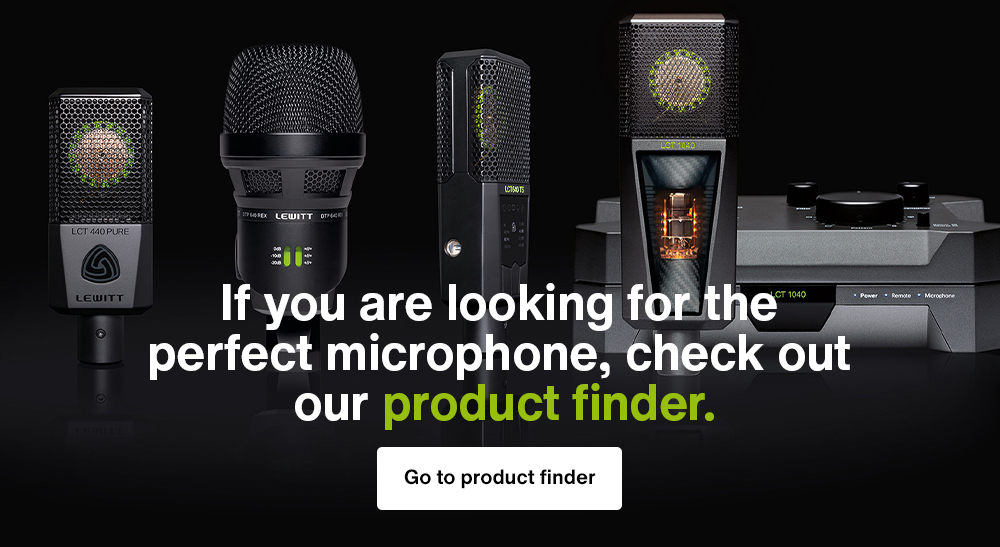
Blog
True love for great sound unites us.
Blog
True love for great sound unites us.

PAD stands for passive attenuation device.
"Passive" means it does not need external power.
"Attenuation" means the signal gets lowered by a certain amount.
"Device" means it is a thing for a particular purpose.
Sometimes a PAD is also referred to as pre-attenuation.
A PAD is a switch or setting on your microphone that you can engage to lower the volume of the incoming audio signal by a set amount.
Every microphone can handle only so much audio signal before it clips. A PAD can help you to record louder audio sources before clipping happens.
Our microphones with PADs
If you need a microphone with a PAD depends heavily on the sources or instruments you will record.
If you only use your microphone to record spoken word or acoustic instruments, you will likely not need a PAD.
If you record very loud singers, drums, or wind instruments, a PAD will be a welcome feature to have.
The loudness of a sound source is measured in sound pressure levels, or SPL. Every microphone has a maximum sound pressure level it can take before it starts to distort, called maxSPL. Learn more about it in our blog about maxSPL and THD, total harmonic distortion.
By design, LEWITT microphones have a high maxSPL. You can record loud sources with them, even without a PAD.
LEWITT microphones with >140dB maxSPL
So, you need to know what sound sources you are going to record before you make the decision if your microphone needs a PAD or not. If you want to have an allrounder that can handle every situation, we recommend a microphone with a PAD.
Are you looking for a new microphone and are not sure what you need, check out our interactive product finder. It will help find the perfect microphone for you!
When you capture a sound source with a microphone, clipping can occur in two places. It can occur in the electronic circuit in your microphone or in your preamp. Both have a max SPL they can handle. If the incoming sound is too loud, they will clip.
For very loud sound sources like drums, having the PAD in the microphone is going to prevent clipping much better.
You can put the microphone closer to your sound source and don’t have to worry about max SPL because your PAD will take care of it.
For other sources, like loud singers or instruments, the preamp might not be able to handle as much SPL as the microphone, so you can engage the PAD on the preamp and prevent clipping that way.
If you have both a microphone and a preamp with a PAD, try using the PAD in the preamp first and see if it still clips. This way, you get a louder signal from the microphone with less signal-to-noise ratio.
This could prevent clipping. If the signal still distorts, engage the PAD on your microphone instead.

If you want to learn even more about microphones, check out other interesting topics on the microphone basics page!